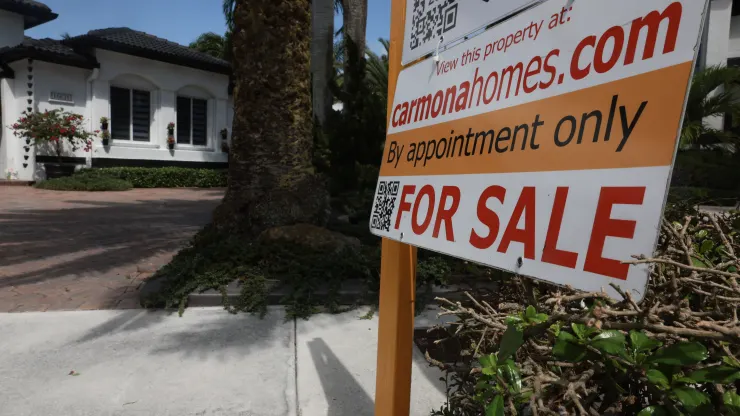As the curtains rise on the spring housing market—a season traditionally bustling with activity—the anticipated surge in mortgage demand remains conspicuously absent. Despite a slight moderation in interest rates, the Mortgage Bankers Association’s seasonally adjusted index reveals a stagnation in application volume, which saw a minor decline of 0.7% compared to the preceding week. This stagnation occurs against a backdrop of marginally reduced average contract interest rates for 30-year fixed-rate mortgages, which dipped to 6.93% from 6.97%, alongside a slight decrease in points.
Refinancing and new home purchase dynamics further illustrate the current market’s challenges. Refinance applications dropped by 2% over the week and saw a significant 9% decrease from the previous year. This underscores the diminished incentive for recent borrowers to refinance due to rates hovering approximately half a percentage point above last year’s figures. Similarly, the demand for mortgages to purchase homes slightly declined by 0.2% from the previous week and plummeted by 16% year-over-year.
Joel Kan, an MBA economist, highlights potential homebuyers’ wait-and-see approach, stating, “Purchase applications were essentially unchanged, as homebuyers continue to hold out for lower mortgage rates and for more listings to hit the market.” Kan predicts a gradual market shift towards increased inventory and slightly lower rates by year’s end, contingent upon a softening lock-in effect.
Matthew Graham, chief operating officer at Mortgage News Daily, provides insights into the factors influencing current mortgage rates. He notes the pivotal role of bonds and the anticipation of forthcoming economic data that could signal inflation and financial health shifts, ultimately impacting mortgage rates.
This period of uncertainty in the housing market underscores the complex interplay between mortgage rates, homebuyer behavior, and broader economic indicators. As the market awaits more precise signals, potential buyers and sellers’ paths forward remain on the brink of evolving economic data.
The current state of mortgage demand highlights a crucial juncture for the housing market, reflecting broader economic sentiments and the anticipatory nature of financial decisions. As we move forward, the industry will remain fixed on economic trends, hoping to stimulate demand and revive a robust housing market.







